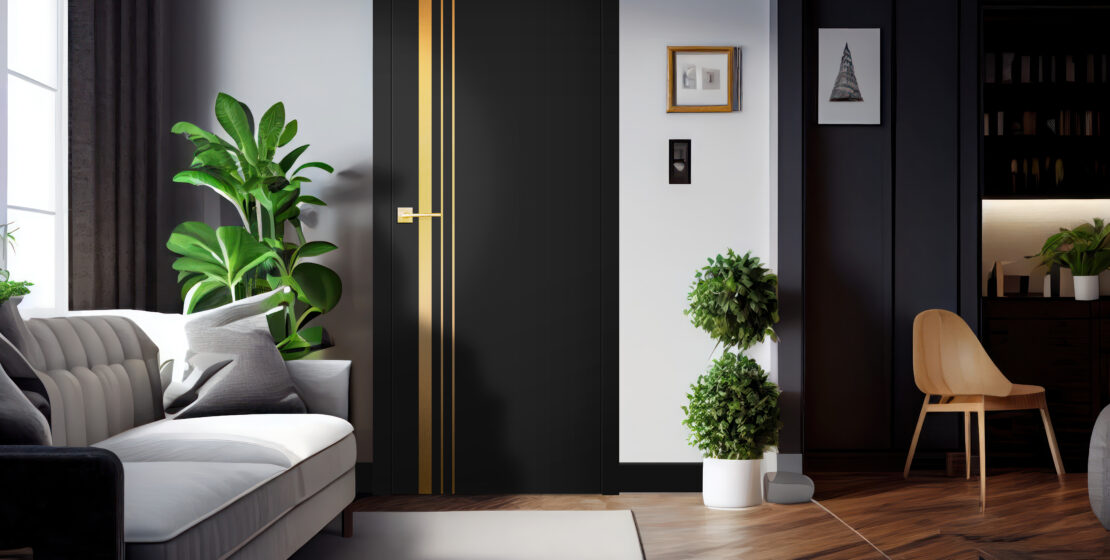Rebated versus unrebated doors – what’s the difference?

You’re picturing the door you’re going to choose for your new interior or to replace your old door. You’re thinking about colours, decoration, whether to go for a plain door or a model with glass.
You’ve already decided whether you want a right or a left-hand door (for details, see the text on right and left-hand doors), but the specialist suddenly asks you: Do you want a rebated or unrebated version? You make a surprised face and quickly search your memory for scraps of information on this subject. In order to relieve you of the burden, provide your mind with more clues and make the choice easier, we have a short guide on this aspect.
Rebated doors – what does that mean?
Rebated doors are very popular and still more common than non-rebated doors. They are particularly favoured by classic arrangements. A rebated door leaf is a door leaf that partly overlaps the door frame when the door is closed and partly retracts into it. Such doors do not form a single line with the door frame; instead, there is a clear step between the two surfaces. In rebated doors, the hinges are visible – they can be seen on the side to which the rebated interior door opens. A rebated door has the property that the adjustment of the hinges is straightforward on them, which can be an important issue for new buildings that are still ‘working’. It is also worth mentioning that rebated doors are easier to install.
A rebateless door – what kind of door?
A rebateless door is a construction in which the door forms a single plane with the frame when closed. Rakeless doors have retractable hinges that cannot be seen when the leaf is closed. This type of door is more demanding to install – the person dealing with it should be prepared that it will be quite a time-consuming process and require a high degree of precision. Any mistake or lack of precision will soon result in an unwanted gap between the door and the frame. It should also be borne in mind that adjusting the hinges can be a little more complicated.
Regardless of the potential challenges, however, rebateless doors, which blend in perfectly with the door frame, are an option that is increasingly and willingly chosen because of their modern nature. Seemingly with less going on, they are intriguing and eye-catching. Although predominantly rebate-free interior doors are available on the market, it is also possible to find rebate-free exterior doors, thus arranging the space consistently and extremely coherently.
Rebated or non-rebated doors – which should you choose?
Once you know the difference between rebated and unrebated doors, you can invite your imagination on another journey to ascertain the effect and look you want. According to general interior designers, rebated doors are a better choice for classic, rustic, retro styling. On the other hand, rebate-free doors are a much better option for minimalist, modern and industrial interiors, where minimalism and simple forms with a distinct character are important, and doors are an important decorative element.
In Scandinavian and boho interiors, both rebated and non-rebated doors will work well. Architects recommend fitting rebated doors in rooms where the door is usually open, as this construction is visually lighter, and choose rebated doors in rooms that are almost always closed and in narrow corridors, as this helps to optically enlarge the space.
Rebated and rebate-free doors: the most fashionable models
The doors available in the ERKADO offer can be ordered in both rebated and non-rebated variants – the decision depends on the final vision of your imagination.
Black rebated doors are an intriguing interior design element, although white rebated doors and white flushless doors are still the most common choice – you can see that white is timeless and constantly provides the perfect background for various design decisions. Here we particularly recommend the Petunia, Sylena, Baldur, Nemesia and Epimedium models.
It is worth bearing in mind that rebate-free doors are “quieter” and there is less going on because of the even surface, which is why the hardware plays an important role. The handle appears to be a detail, but the decision whether it is gold or black will significantly influence the appearance of the interior. If you are closer to natural shades of brown and incorporated glass forms, consider the Lorient, Ansedonia and Magnolia sashes. Miskant is an ideal choice for loft style, nature, ecology and minimalism, and the most modern designs will appreciate the Graf leaf made of tempered glass, bearing in mind that this door is only available in the rebated variant.